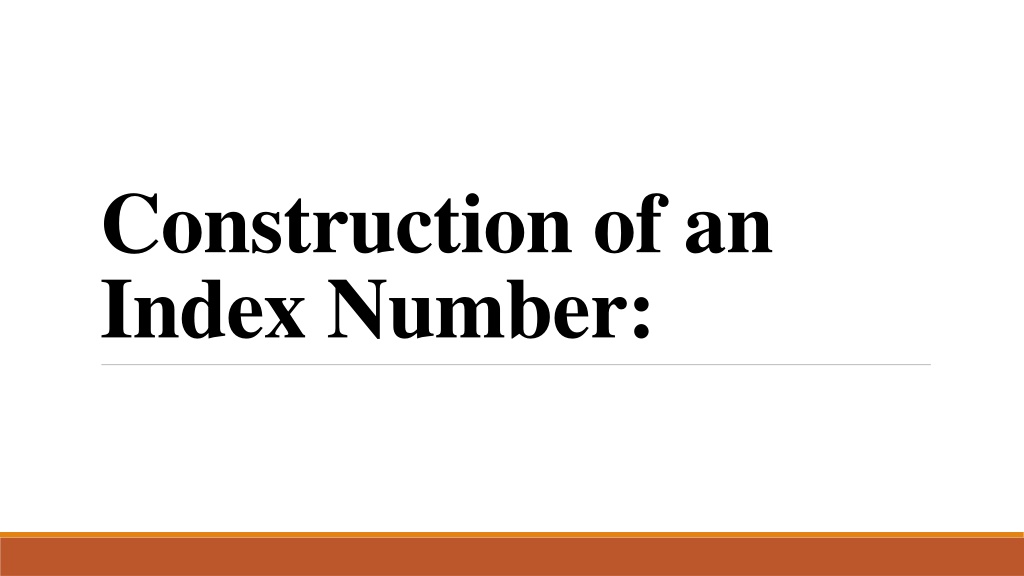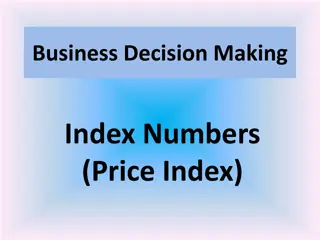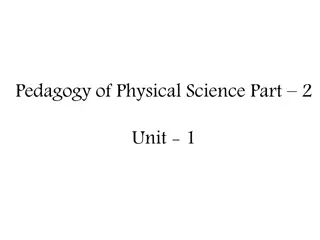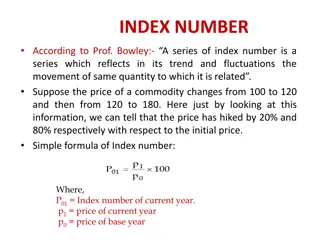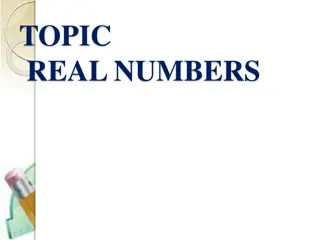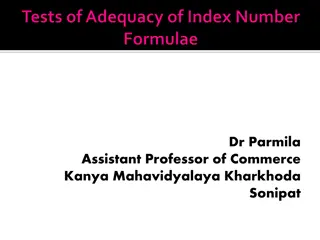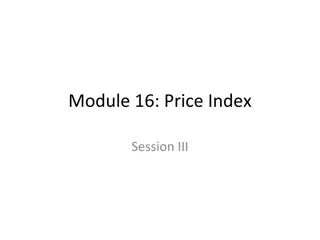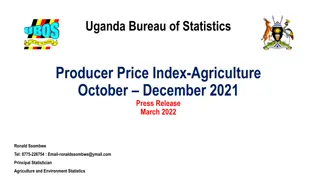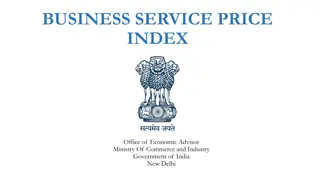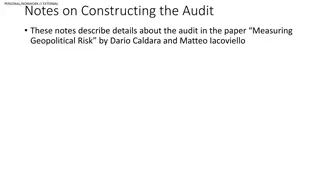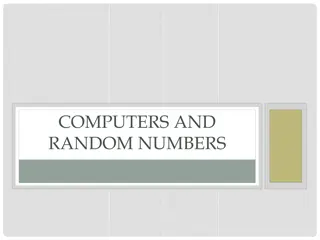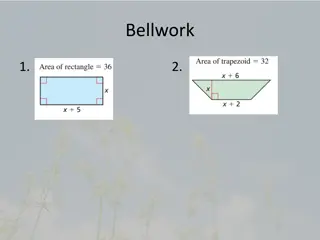Exploring Methods of Constructing Index Numbers
Various methods of constructing index numbers, such as un-weighted index, simple aggregate method, and simple average of price relatives method, are explained in detail. These methods play a crucial role in analyzing price changes over time and comparing different economic indicators. Each method offers a unique approach to calculating index numbers based on specific criteria and assumptions, providing valuable insights for researchers and economists.
Download Presentation

Please find below an Image/Link to download the presentation.
The content on the website is provided AS IS for your information and personal use only. It may not be sold, licensed, or shared on other websites without obtaining consent from the author. Download presentation by click this link. If you encounter any issues during the download, it is possible that the publisher has removed the file from their server.
E N D
Presentation Transcript
Construction of an Index Number:
Construction Of an Index Number: The various methods of construction of Index numbers are explained through price index numbers. The methods of construction of price index numbers can be classified into broad categories as shown below:
Un-weighted Index In the un-weighted index number the weights are not assigned to the various items used for the calculation of index number. Two unweighted price index number are given below:
Simple Aggregate Method This method is based on the assumption that various items and their prices are quoted in same units. Equal importance is given to all the items. The formula for a simple aggregative price index is given as follows: where P1 is the total of current year s prices for the various items. P0 is the total of base year s prices for the various items.
Simple Average of Price Relatives Method This method is an improvement over the previous method as it is not affected by the unit in which the prices of various commodities are quoted. The price relatives are pure number and therefore are independent of original units in which these are quoted. The price index number using price relatives is defined as follows: where P1 and P0 indicate the price of the ith commodity in the current period and base period respectively. The ratio (P1/P0) 100 is also referred to as price relative of the commodity and n stands for the number of commodities.
